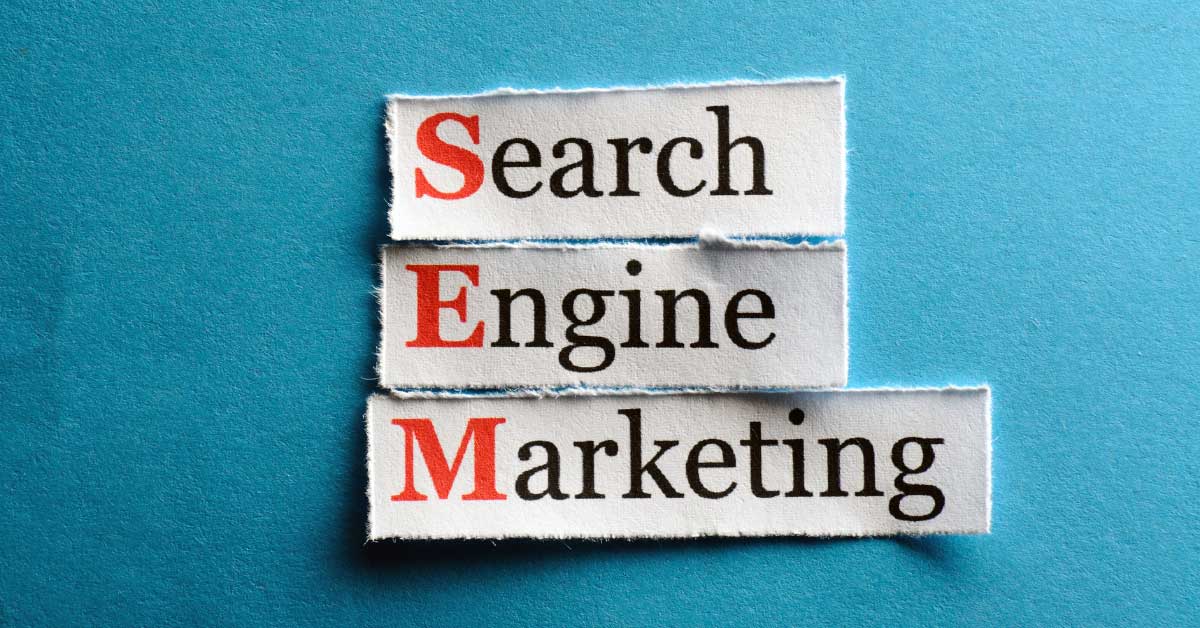Written by Polka Dot Marketing
August 10, 2021

SEO vs SEM – What’s the Difference?
Properly managing your company’s digital marketing is essential when it comes to maximising your performance. Most of us are familiar with search engine optimisation, not everybody knows how it differs from search engine marketing.
Let’s explore everything you need to know about SEO vs SEM.
Search Engine Optimisation
There are many different nuances of search engine optimisation to consider when using this strategy. Otherwise, you may find yourself in a situation where you fall far short of your goals.
Listed below are some of the key attributes you should know about.
Technical SEO
For those who are unfamiliar with this term, technical SEO refers to the process of making sure Google can find your website. It also includes managing a handful of other factors that contribute to your search ranking.
For example, part of technical SEO is how quickly your page loads for your users. If your site takes too long to load, you risk increasing a metric known as a bounce rate.
This essentially tells Google that your site has low quality content or is relevant to the users. The search engine may then lower your ranking.
On-Page SEO
This is how you optimise the content on your website. Aspects like keywords, title tags, and meta-descriptions are all part of on-page SEO.
Although the attributes are relatively simple, it’s crucial to handle them correctly. Your audience won’t be able to find your content if you don’t do so.
Off-Page SEO
In contrast, off-page SEO involves cultivating trust through other websites. To elaborate, having a reputable website link to your website will show Google that your site is trustworthy.
Google is then more likely to recommend your site to other users.
When looking for reputable sites, you need to consider a metric known as domain authority (DA). This is a numerical value that denotes how trustworthy a particular website is.

Search Engine Marketing
Although the names might sound similar, search engine marketing is not identical to search engine optimisation. It requires different ways of thinking and different strategies in order to succeed.
However, it’s important to note that search engine marketing also includes SEO.
Let’s explore its major aspects.
Bidding
When you run online ads, you will need to bid for a target keyword appropriately. How much you bid for an ad has a direct impact on how well you rank.
So, if you’re the highest bidder for a particular advertisement, users will see yours before they see any of your competitors’. For this reason, a carefully outlined SEM campaign can easily have a significant return on investment.
It should come as no surprise that you’ll need to conduct an extensive amount of research on the keywords your audience is searching for. No matter how much money you throw at a particular keyword, you won’t be able to meet your performance goals if that keyword is irrelevant to your audience.
In some cases, you could lose a significant amount of money. This is due to the fact that you are required to pay the bid amount for each click, something that is known as cost per click (CPC).

Ad Copy
So, you’ve managed to get a high number of users to see your ads. However, they aren’t converting like you want them to.
Writing compelling ad copy is an essential part of the SEM process. People often need to be nudged in the right direction when it comes to getting them to take a specified action.
In fact, a solid headline can often be the difference between whether or not people click on your ad in the first place.
We also have the opportunity to split test different ads in order to find the ad copy that works best. Split testing refers to a situation where you change one factor of multiple advertisements but keep other factors the same.
In this case, you could run multiple ads that have the same visual but different headlines. You can then analyse your metrics to see which ad users clicked on the most.
Quality Score
This is one of the most important metrics to consider. A Quality Score is essentially how Google determines the overall quality of your ads.
The term “quality” here refers to how relevant your advertisements are to your audience. So, an ad that doesn’t get very many clicks will likely have a fairly low Quality Score.
The primary factors that contribute to this value include:
- Your overall click-through rate (CTR)
- Your landing page quality
- The Quality Score of your Google account
The primary benefit of achieving a high Quality Score is the ability to secure a discount on future ads. This can allow you to save a significant amount of money and drastically increase your return on investment.
It’s in your best interest to prioritise keeping your Quality Score as high as possible.

SEO vs SEM: What’s the Difference?
The main differences are the time it takes to see results and the money you need to initially invest.
In general, traditional SEO comes at the lowest cost since you do not have to directly pay for the traffic you drive to your website. SEO takes longer to see substantial results, though.
In many cases, they complement one another and are components of a solid marketing strategy.
Understanding the above differences between SEO vs SEM is crucial. So, keep this guide in mind in the future so that you can make the most of your digital marketing campaigns.
Want to learn more about what we have to offer? Feel free to get in touch with us today and see how we can help.


Related Articles
Unlocking SEO Benefits: How Blogging Improves Search Engine Rankings
By maintaining a consistent blogging schedule, you increase your chances of ranking higher in search engine results.
Local SEO and Organic SEO: Understanding the Difference
Optimising your website for search engines is crucial for business success. Important strategies to consider are local SEO and organic SEO.
Why Website Navigational Menus Matter in SEO
Do you know the importance of website navigational menus when it comes to SEO? Read on to learn everything you need to know on the subject.




